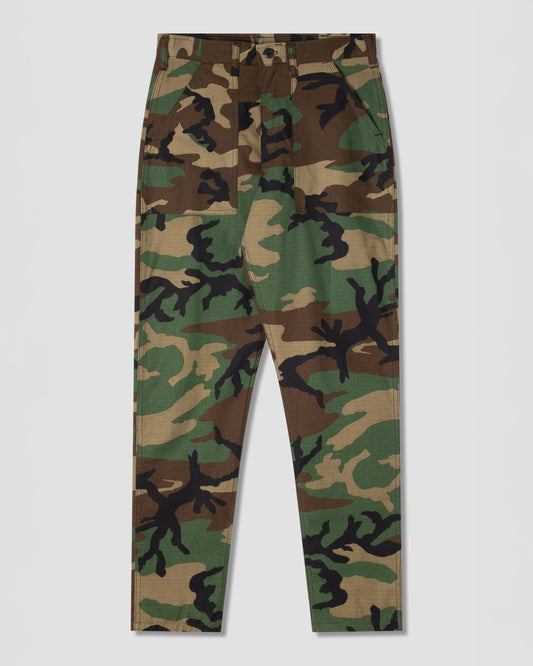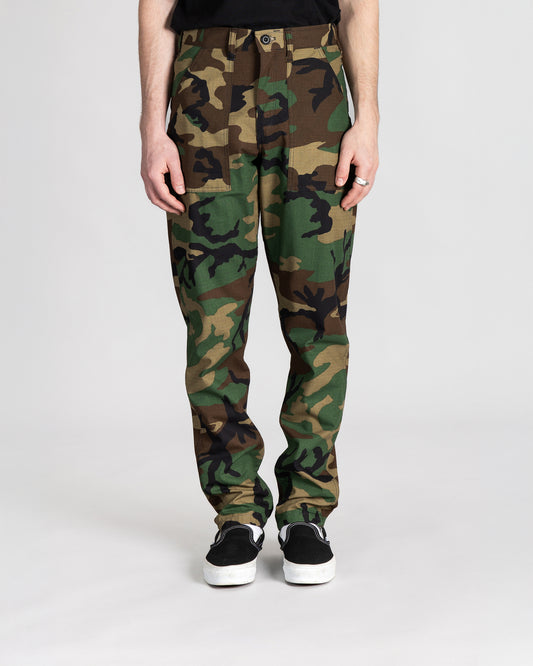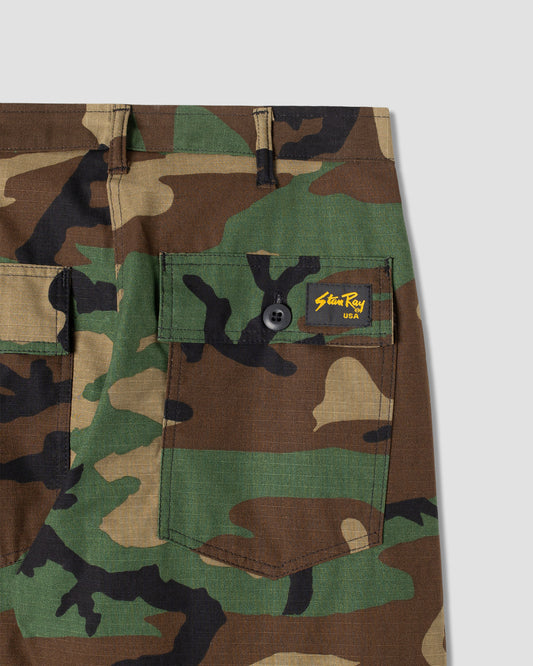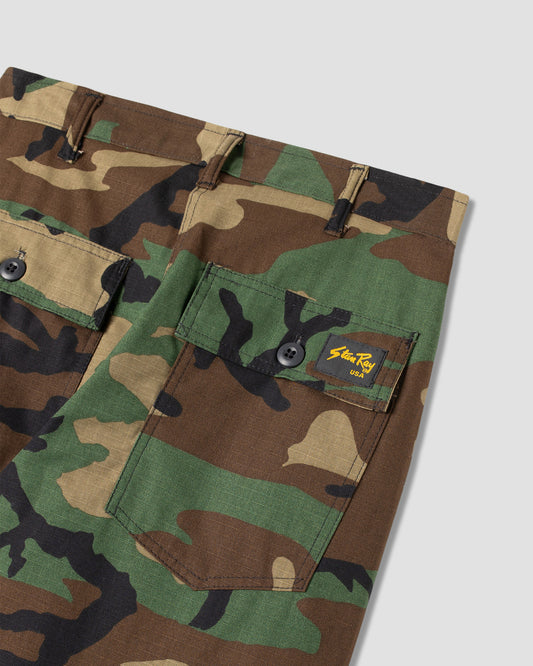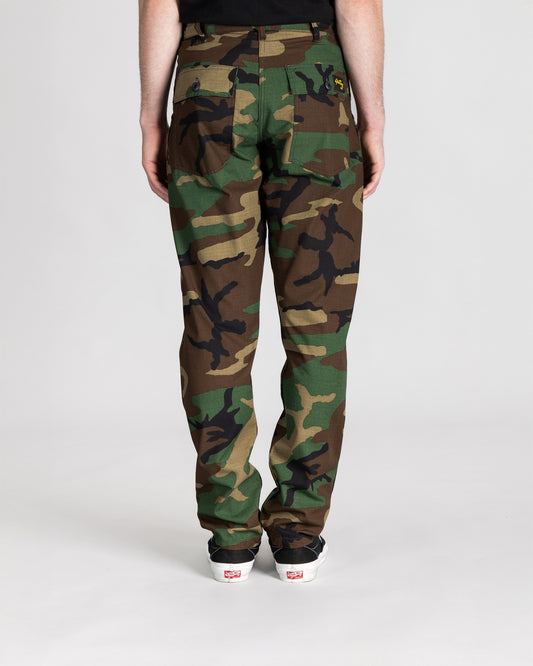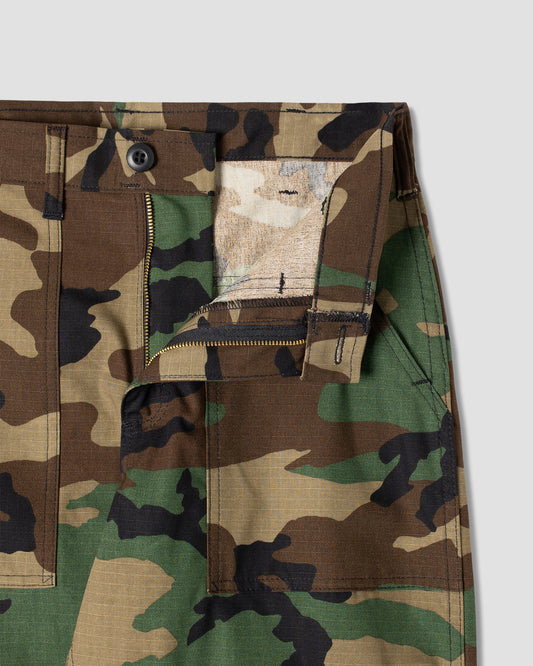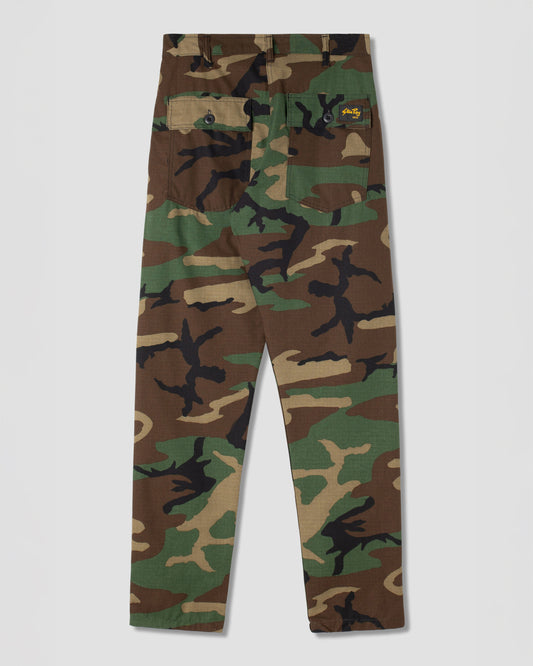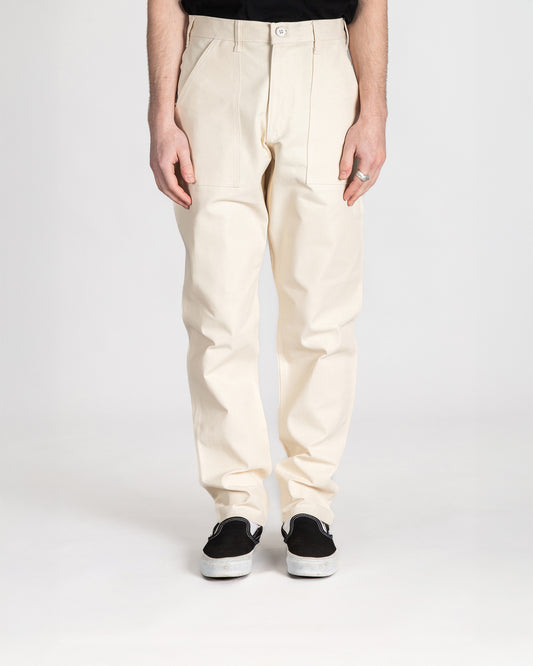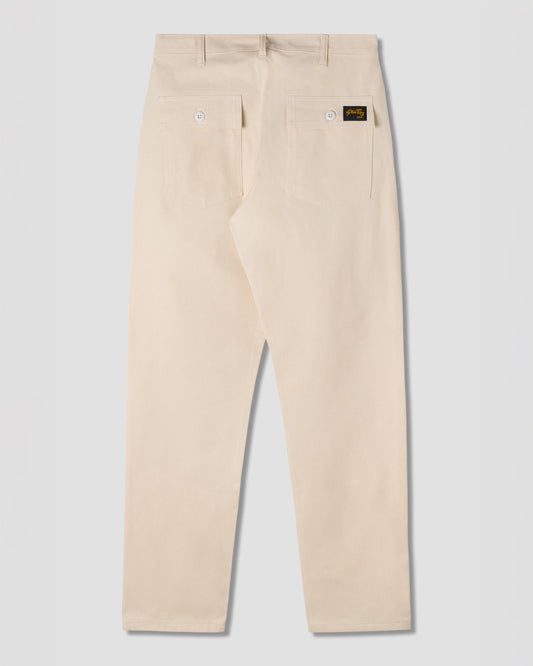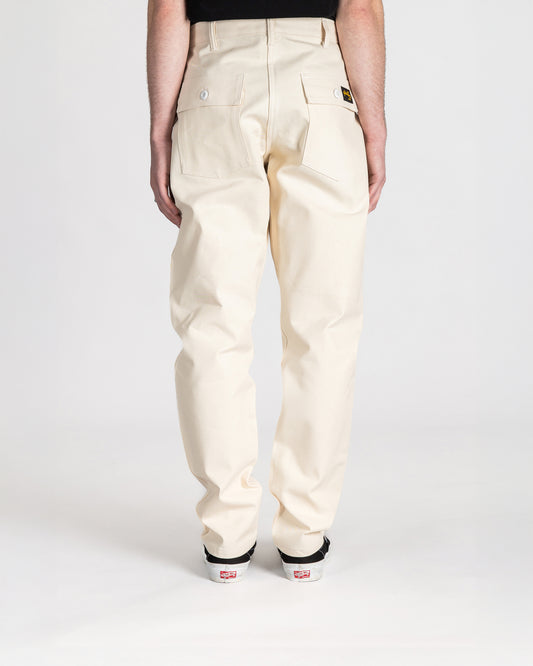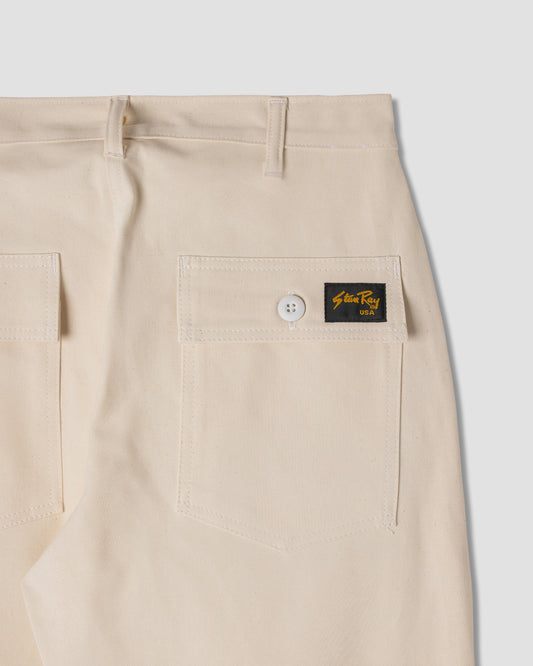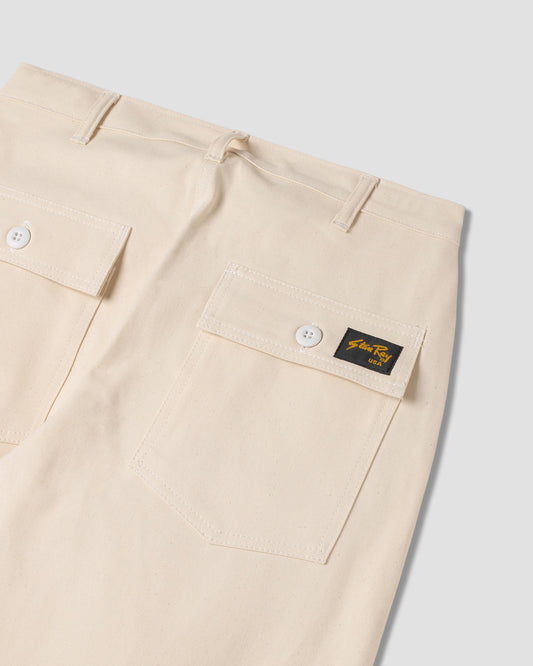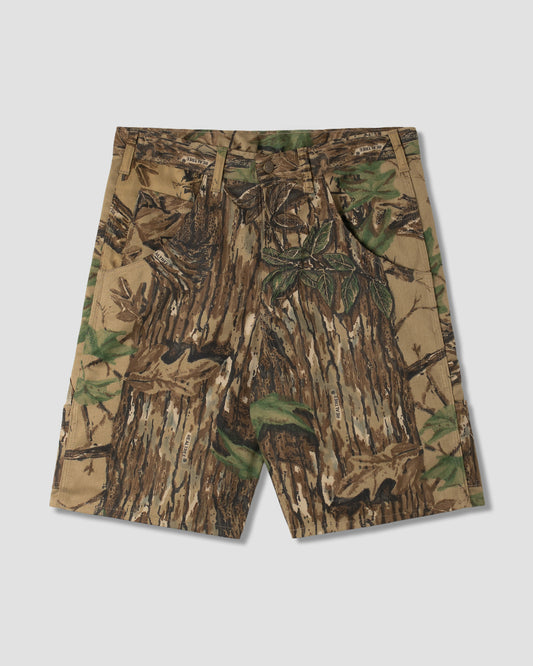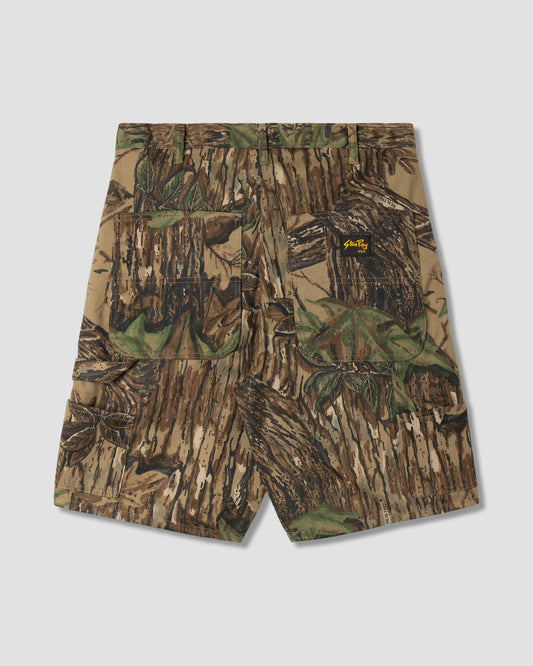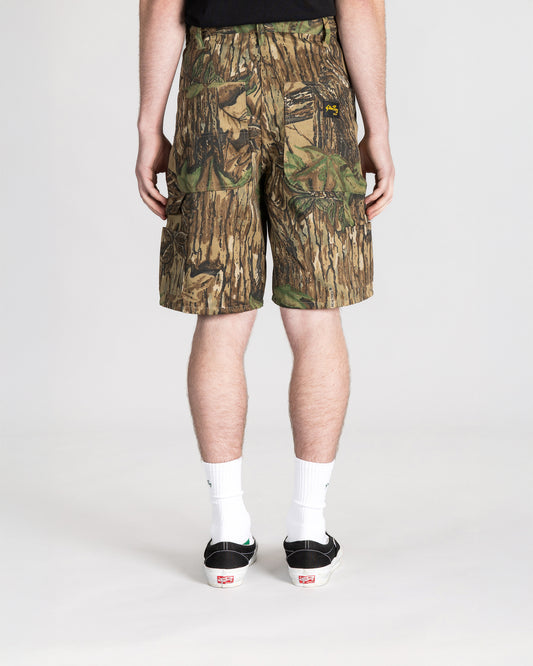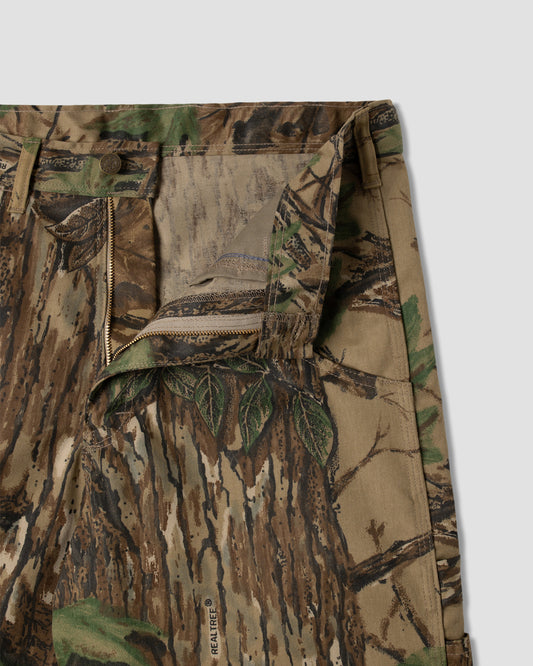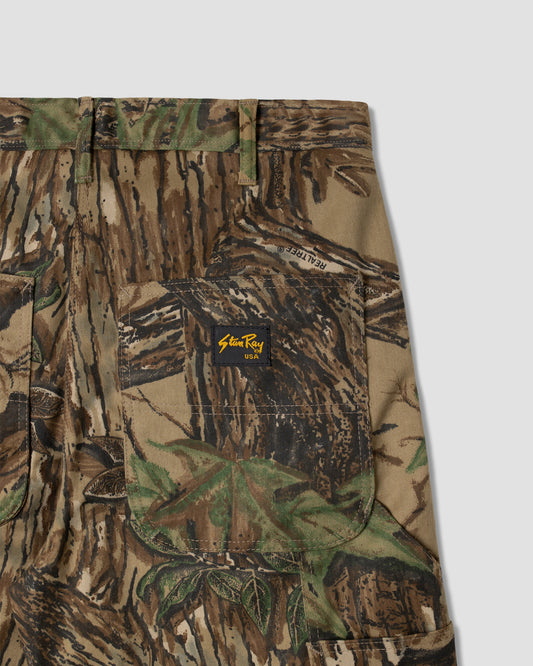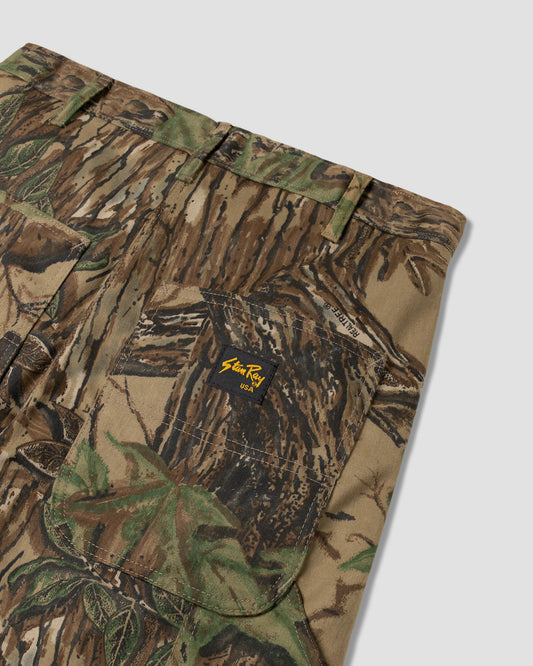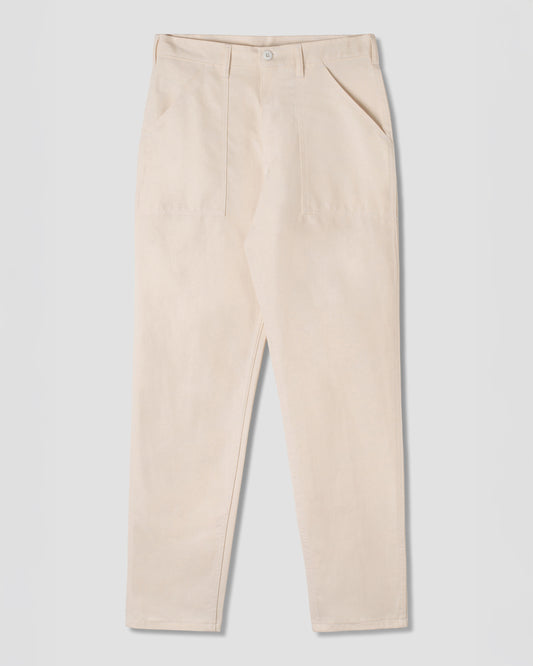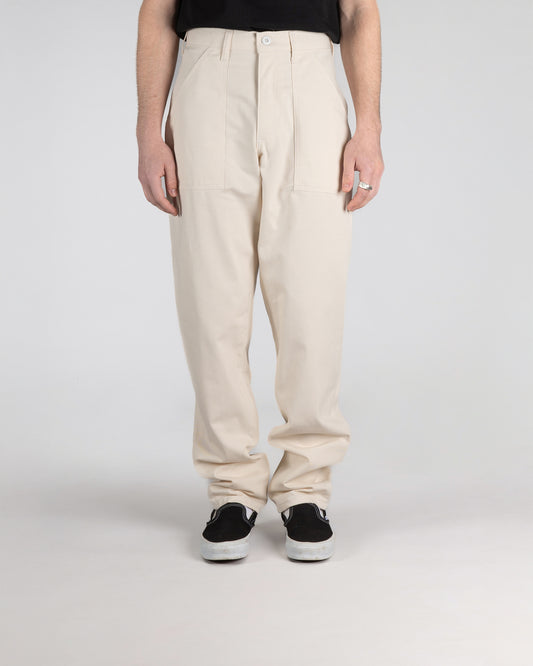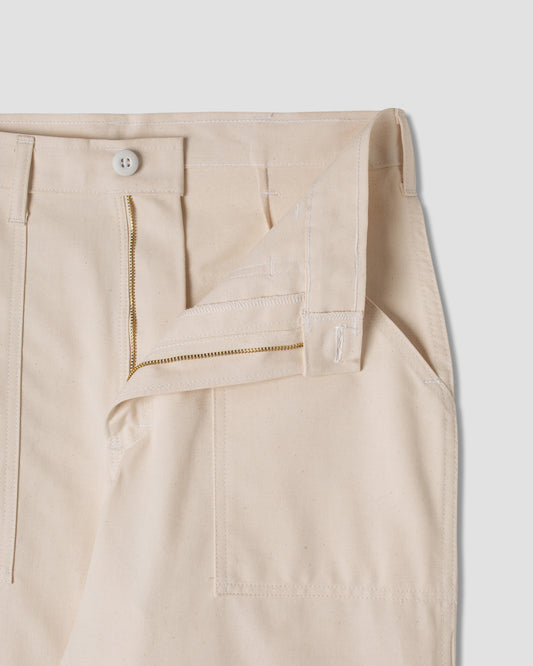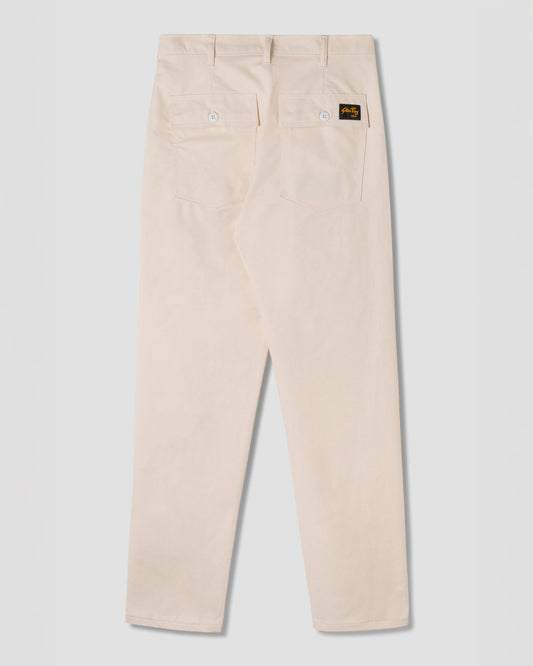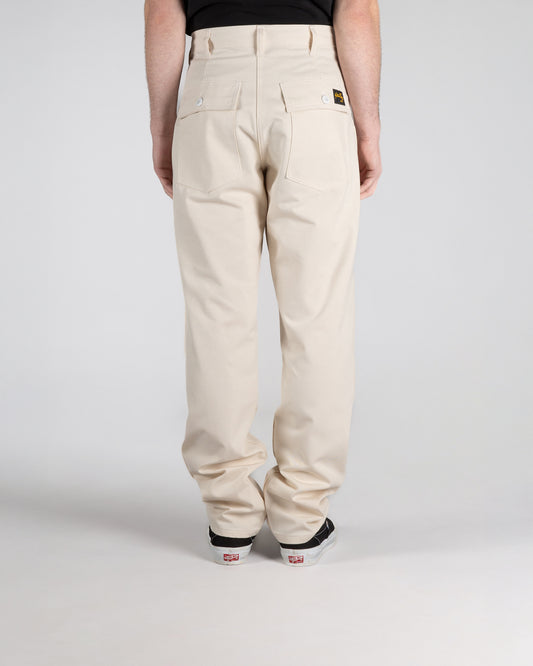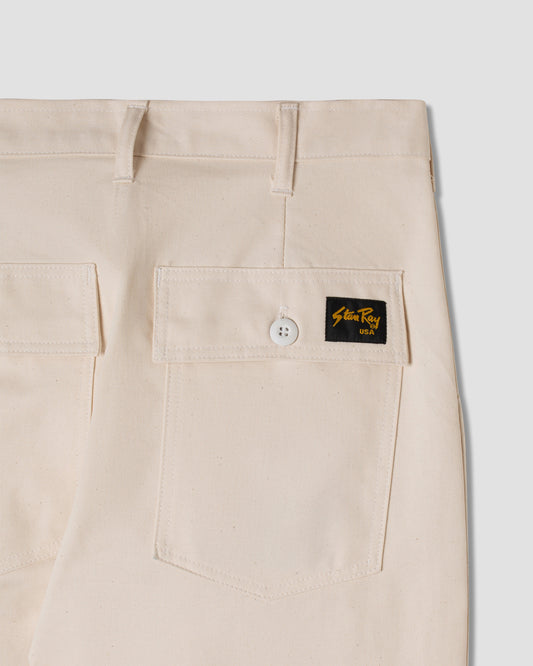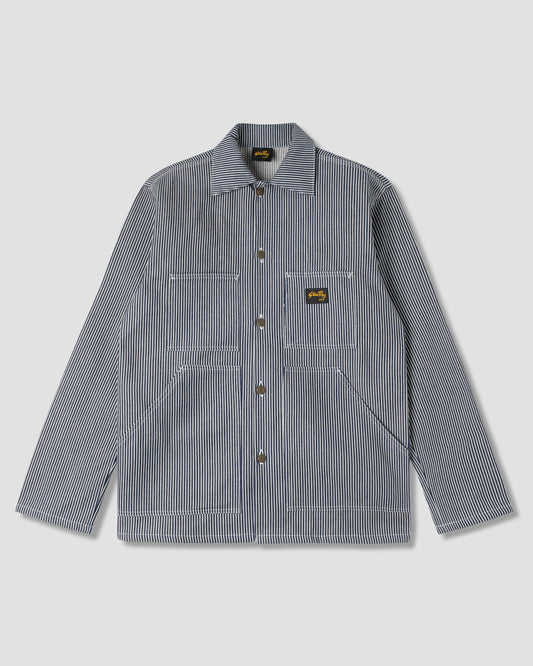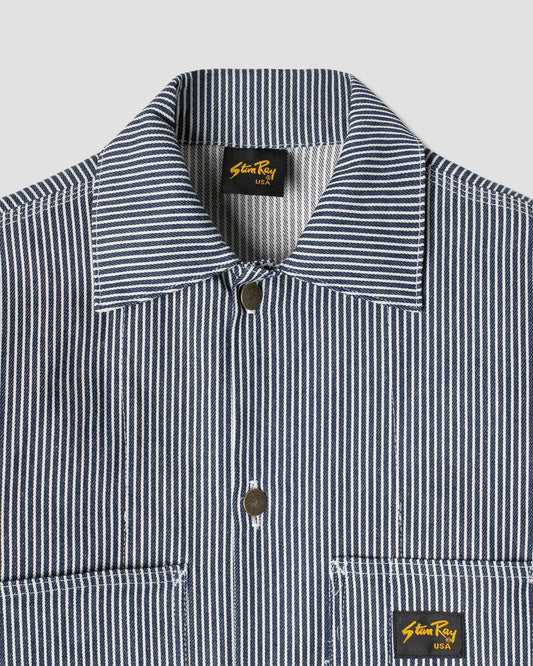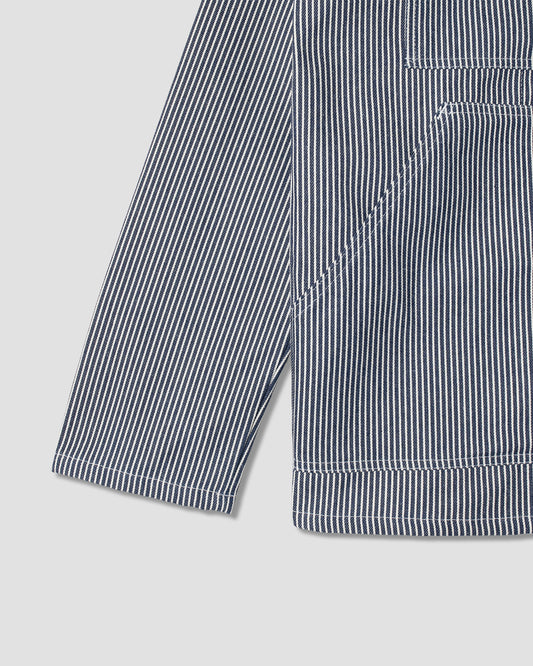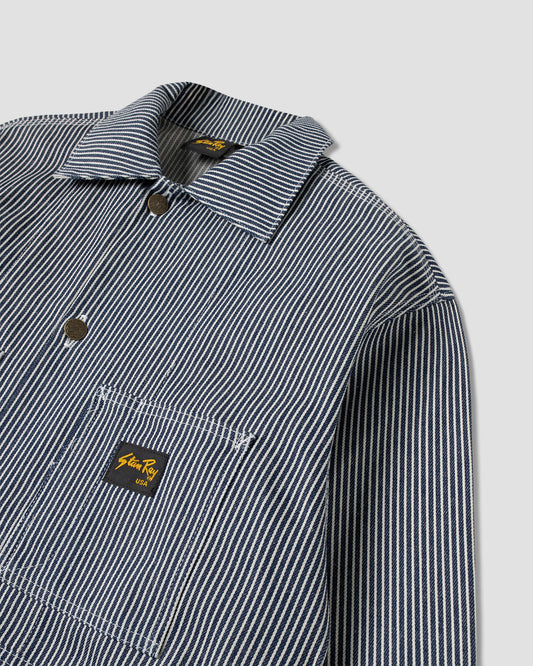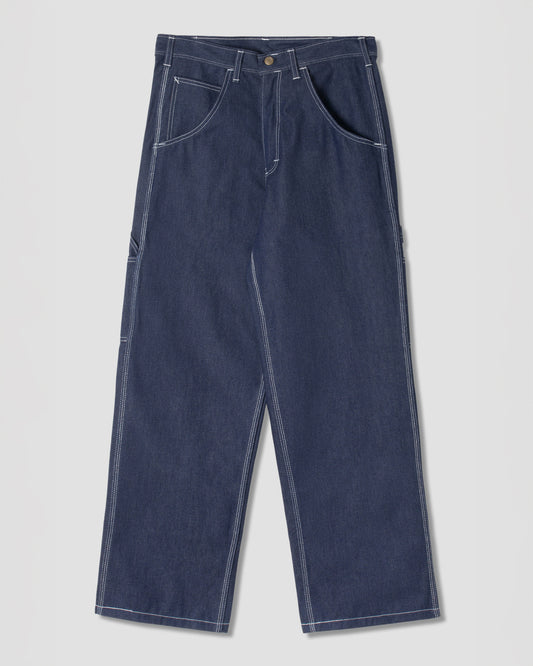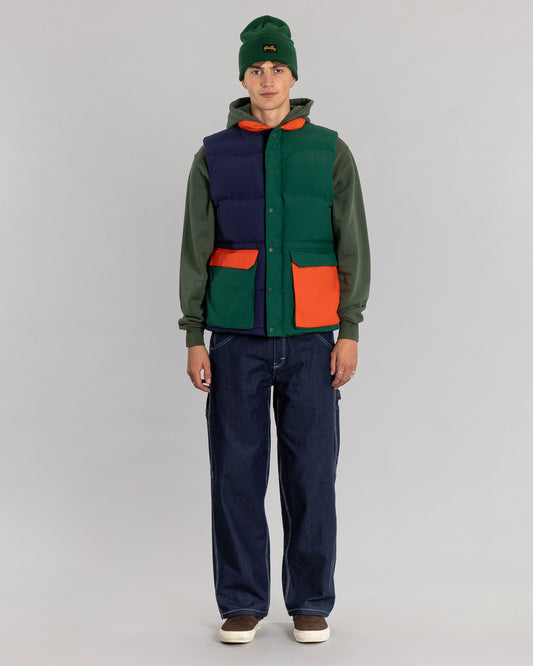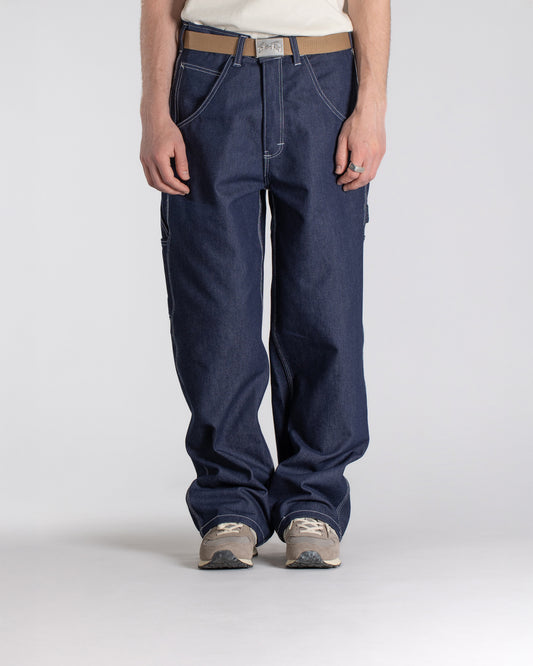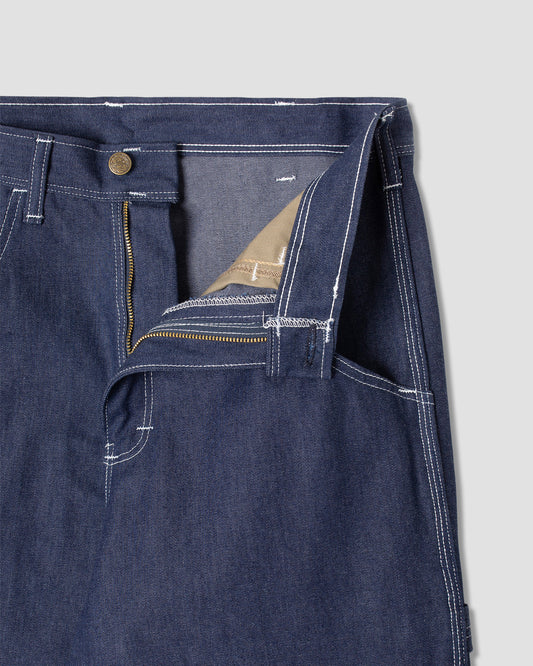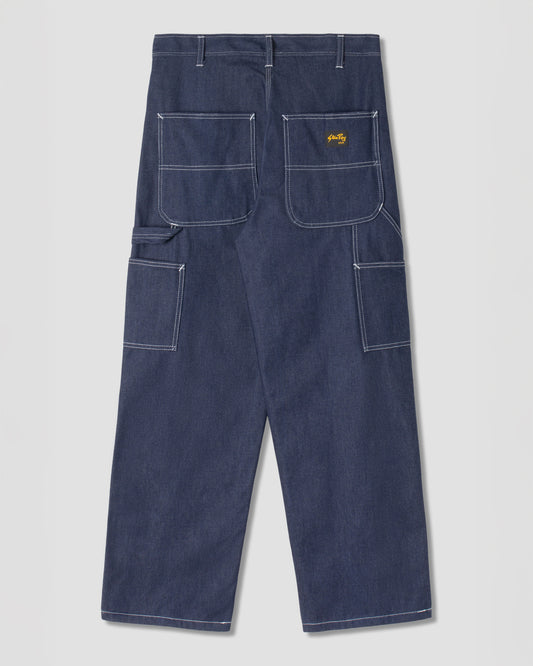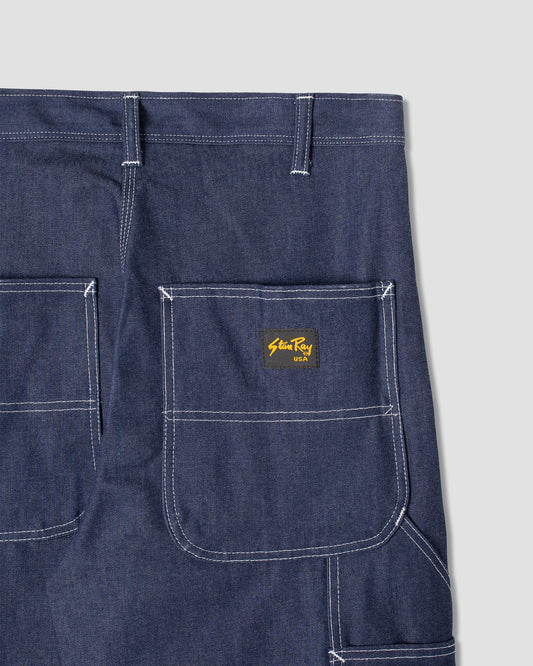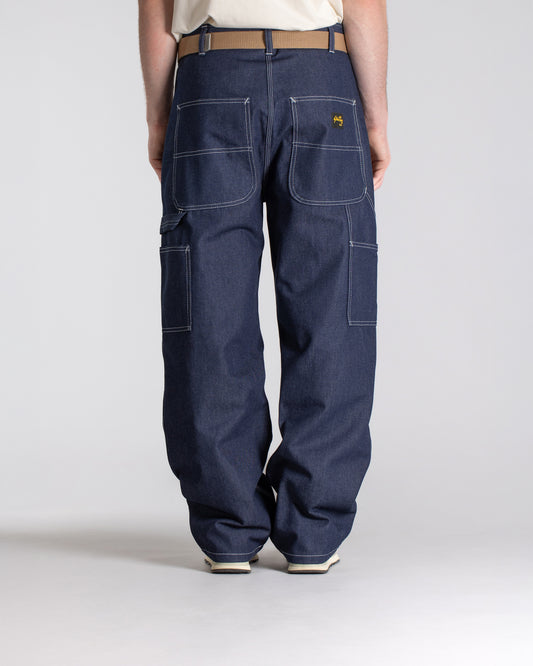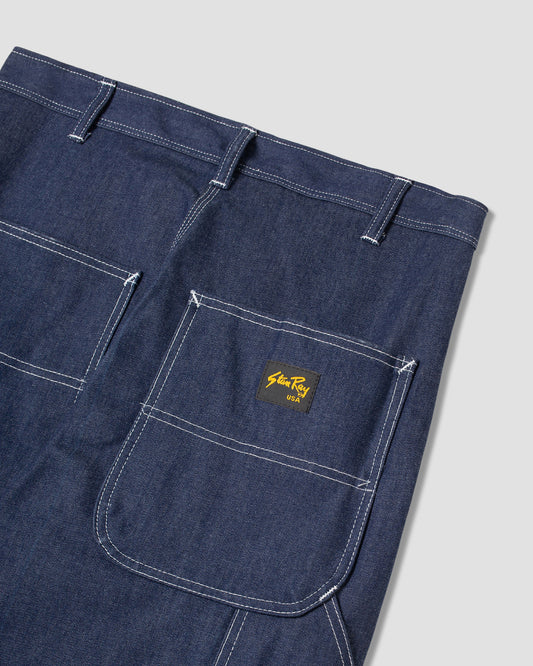
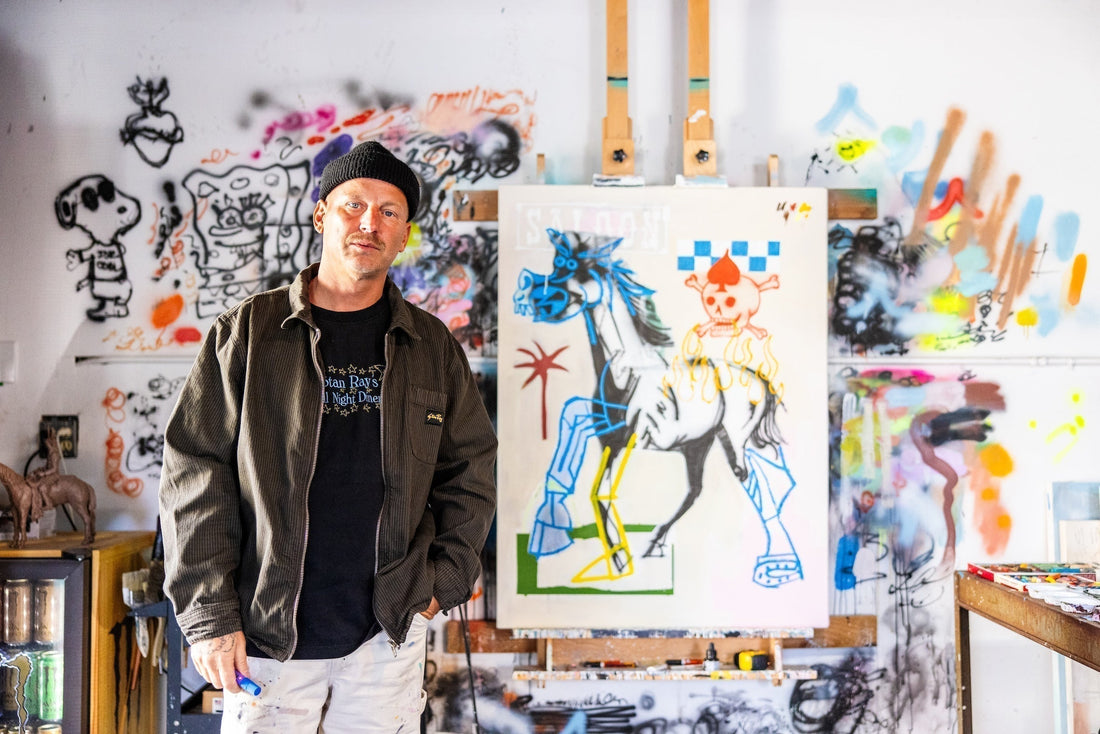
Stan Ray meets Terry Urban
Share
Terry Urban is an artist, surfer and workwear aficionado based in California.
Pulling from a wide variety of sources, his paintings mix classic American iconography with a loose, layered style to create true 21st century pop art.

Keen to find out more, we caught up with him at his studio to talk about his artistic process, his love of surfing and why mistakes are mostly a good thing…
I wanted to start by asking about your studio and your set-up. Can you tell me a bit about where you paint?
My studio is a two-car garage. It’s pretty small, but it’s better than studios I’ve had in the past. When I lived in New York City, I lived in a studio apartment, so I was walking over the artwork, and it was always in my eyesight, so it was hard to get away from it.
But here, the garage is on the back of the house, so I can draw in my house on my iPad and figure out what I want to do, and then go into the garage and start painting it. I think for me, it’s important to have a space that’s away from your normal life—whether it’s an hour commute or it’s two steps down the stairs.
So you need that separation?
I think it’s important for people to be able to turn it off—like if you’re a police officer or a firefighter, dealing with high energy stuff, you need to be able to come home and turn it off. And it’s the same for art—you’re going at it constantly, being creative all day—so you need to be able to turn it off when you come out of that studio.

Quite often there’s this romantic idea of the artist—suffering for their art in squalor, not being able to move for their unsold masterpieces… but maybe that’s not healthy in reality.
It is cool to romanticise about walking over your art, but I honestly think it’s important to take breaks. I’ll be sitting and painting something for six hours, wasting paint just going over it again and again—but sometimes you’ve got to take a break—just walk away and come back again tomorrow, and you’ll see something completely different. You’ve got to have fresh eyes. It’s like when people produce music, listening to the same three minute loop for the next twelve hours—it becomes redundant.
Are you the sort of painter who has a lot of paintings on the go at once, swapping between them, or do you just work through one at a time? It seems everyone has their own way of working.
I wish I could work like that, but I’m very impatient with my work. I’ve been getting better with my patience—I think surfing has helped with that as you’re always waiting for waves, but I was very impatient with my work before. I used to have to finish a painting within a day—no matter how late it was at night, but now I’ll be like, “You know what, it’s break time,” and then I’ll go back to it later.
So now it takes me about a week or so to finish a painting, or maybe even more than that. But I don’t have a big enough studio to work on eight pieces at a time, but that would be incredible.

William De Kooning is the perfect example of that. He did a couple of paintings called The Woman, and he had one of these paintings sitting in his storage for something like seven years, and then there was one spark in a conversation during a dinner with friends, and he was like, “Fuck! I remember this painting!” He went back, grabbed the painting out of storage and then started painting it again, and now it hangs in the MOMA. It’s crazy.
That’s a huge pause in working. So your process is more short and sharp?
Yeah, but also there are pieces that I paint over. I do that all the time. Some of my work holds value to me and is personal, but most of it, I’m like, “onto the next one.” A lot of artists won’t even sell the originals—they’ll do prints of it but the original has to be 50K for them to sell it, but I’m like, “Let’s go. Next painting.” Some people’s artwork is super-personal to them, but I’d rather have it hanging on someone’s wall than me sitting and hoarding it for ten years.

Going back to your studio and your process, are there any specific tricks you’ve got to tap into the zone?
Music is key. Music is a huge influence—I grew up in a family that always listened to music, and I was heavily into skateboarding, and music is a huge part of that—whether it was punk or hip-hop.
The last painting I just did is called The Well Has Run Dry—it’s about Los Angeles and the wildfires, and the Monterey Plus Agreement. So when I was painting that piece that had a certain feeling, I’d put on music that was similar to that feeling—so for that it was Neil Young. His music has kind of an underdog, grounded feeling to it, but it got me to where I wanted to go with the painting.
And if I want to do something more aggressive, I’m going to be listening to Misfits or Minor Threat, or if I’m doing something more relaxing, I’m going to be listening to some Coltrane or some Miles.

You're matching the mood?
Absolutely. It’s like when people go and work out, and they’re amped. So yeah, music is huge for me. Painting is like therapy—actually, it is therapy. When I’m painting, I’m thinking about nothing else other than what’s going on inside the painting and what I’m feeling at that time—whether that’s angry or emotional or political—so it’s almost like going into a meditation. So it’s definitely important to know what kind of vibe you want in your musical choice.
I read books about Basquiat, and he had a TV going, there was music going, he’d be reading a newspaper and there’d be a book open. He had all these things surrounding him at all times… but I can’t even have a podcast going.
What about your clothes? Do you have a painting uniform you always wear for when you’re in the studio?
This is going to sound planned, but I wear Stan Ray painter pants every day now. I’ve been wearing workwear since I was a skater when I was in high school, and also I worked for my father as a home remodeler, so I was a carpenter for five or six years. I’ve been in painter pants for as long as I can remember.

What else goes into your painting routine? Do you know how things are going to turn out before you start, or do you just kind of see what happens?
Sometimes I know what I’m going to do first—I’ve maybe already sketched it out on an iPad first and then I go and start painting it. But I’d say 75% of the time I’m not happy with it, so then I start to go over stuff. Say I’ve painted a horse on the canvas, and I don’t like its composition, I’ll go and repaint over certain areas and create new things. And I feel like when I do that process is when I feel like I make my best paintings. The mistakes are what makes them.
My mind tends to overthink, so when I’m drawing, I’m being too precise. Then when I paint it and it doesn’t work, I’ll paint over it and I might leave a green blotch here or a tan blotch there. Then when I go back and look at it, it’s like, “I’d have never put that green blotch there.” Those mistakes turn out to be the best part of the artwork.

It’s that human thing isn’t it? When you see something that’s got that mistake thing in it—like a bit of music where a studio mistake is left in—it kind of grabs you.
Absolutely. I’ll give you a perfect example. On ‘Gimme Shelter’ by the Rolling Stones where Mary Clayton is singing in the background, she’s screaming at the top of her lungs, and her voice just cracks in one of the choruses—and you can feel her pain in it, and you can hear Mick Jagger in the background going, “Whoo,” and I always wondered about that.
I always try to pick out certain parts of songs like that where you’re like, “Damn, they were so stoked that they just left that in.” I think those left in mistakes are so important. Another example is John Lennon and ‘Hold On’. He’s singing something like, “Hold on Yoko, it’s going to be alright,” and then he says, “COOKIE” in this voice like the Cookie Monster. I’m going to have to research it now, but whenever I listen to that song, I think, “What the fuck was John Lennon thinking when he said that?” It’s so weird.
And I feel that stuff is the best attraction to my artwork. When people are like, “I see what you did here, but what is that right there?” I like it when they’re thinking, “What made you think of that?”
How important is the physical aspect to painting? What keeps you using paint and canvas and stuff when you could just be doing everything on a computer?
Obviously it’s easier to create on an iPad or Photoshop. It’s faster, but there’s not as much process. It’s great for designing and doing merchandise or magazine covers, but my main thing this year is I want to start doing more physical shows. I’ve got some pieces at the LA Art Fair, then I’m doing one in Copenhagen, and then one in Montreal. I want people to be able to see my artwork with their own eyes—instead of just scrolling and seeing it on the ‘gram. Seeing a painting on Google Image is one thing, but seeing one in real life is completely different.
You mentioned before about surfing—how do painting and surfing work together?
Like peanut butter and jelly. They work together so well. There’s a reason why there’s so many surfers who are artists. I feel like art saved my life, and then surfing just made it better. I learned to be more patient, because all your doing is sitting in a line-up waiting for waves.
And then every wave is different. When you go to a skatepark, you know every nook and cranny of that skatepark, but with surfing every wave is different, so you never know what you’re going to get. It’s another form of meditation for me—you’re riding mother nature, you’re getting a work-out, and you’re sitting alone in the water thinking about nothing except catching a wave. It puts the cherry on top.
And also, sometimes I feel completely blown out of creative ideas, but then I hop in the water for an hour and then come back out psyched and then boom—the Ideas are popping up again. It just amplifies the whole lifestyle for me.

A lot of people I talked to who surf always say about how ‘in the present’ it is. You’ve got to live in the now.
You’re probably on a wave for ten seconds at most—it’s so fast that you have split-seconds to react—so that’s why everyone says about being in the moment—because you are! You’re literally riding energy from the ocean. You can’t get much more spiritual than that.
Is that a feeling you try and capture in your painting—not thinking too hard and just going with it?
To be honest, yeah. Sometimes I start something and I constrict myself to it—like, “This is what I have on my iPad, this is what’s going on my canvas,” but then eventually I’m just like, “I’ve had enough of this canvas, I’m going free.” And I feel like those paintings are the ones that work best, rather than the pre-planned ones.
The mind is a weird thing—sometimes you can take advantage of the situation and be super creative and smart, and there’s other times it holds you back—whether that’s by fear, or it’s too controlling of your own destiny.

There’s often mental blocks holding people back. In those situations maybe the mind isn’t that helpful. Even with art, which is meant to be free and without boundaries, it’s hard not to worry what other people will think.
Absolutely. If you look at other people in their past in their career, some people were doing something for so long, and then they switched into something else, and then they were booted out of the whole art world. What’s that all about? An artist is supposed to do what they please. But then I also see why people keep doing the same thing over and over and over again—I understand that.
There have been times where I’ve wished I could just keep things simple and keep doing the same thing again and again, but for how my mind works, I’m always trying to find new creative ways to paint a canvas differently. My work is always changing, and I feel like I’m always learning—whether that’s air brush or pastel or oil stick—or trying minimal art work or something abstract. Everybody is different and in their own lane, but I just happen to be one of those people who gets bored if they do the same thing for a month.
Before we wrap this up I wanted to ask about the cultural references you put into your work. Where does that stuff come from? I know some people like to keep that stuff separate and be like, “I only paint trees,” but you fully embrace pop culture iconography.
I think it starts when you’re a child. If you grew up on TV and commercials and cartoons, then that’s the reason why a lot of artists my age or younger do stuff like that—adding in cartoon characters or pop culture stuff. I think that’s why we’re attracted to that—because we grew up on that.

I suppose we were kind of barraged with that stuff. Like adverts and jingles and little characters trying to sell lemonade or something. Our heads are full of that stuff, but 150 years ago things were a lot less noisy culturally. Trees were all they had!
Absolutely. We have so many distractions in life that our minds are a little bit more complex than they once were. Whether it's a sign or a cartoon or lyrics, I like to incorporate that stuff because I feel like that stuff pops up subconsciously in my brain all the time when I’m painting. Adding things like that help me symbolise what I’m trying to get across—whether it’s Western signs or Porky Pig.
It gives another level of connection too.
Yeah—I get people that buy my paintings that say, “The reason I bought this is because that lyric is from one of my favourite songs.” It can be personal to them, and mean something to them. It shows we’re like minded individuals. It’s like the reason why you become friends with your friends… you all share the same interests.

Thank you Terry!
Q+A by Sam Waller.
Photography by Bowie De La Pena
Check out more from Terry here.
